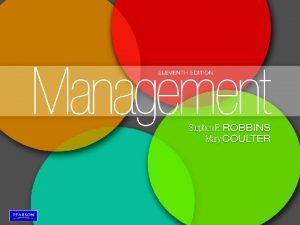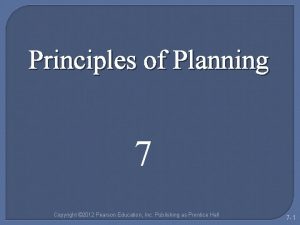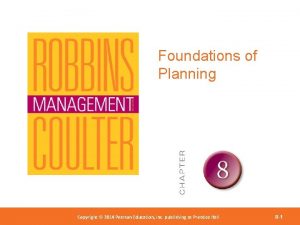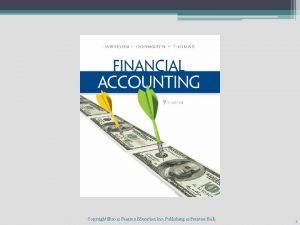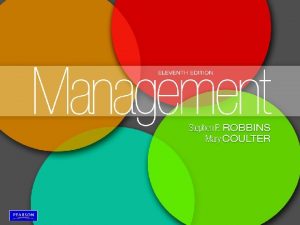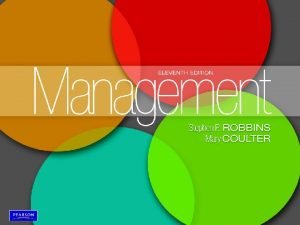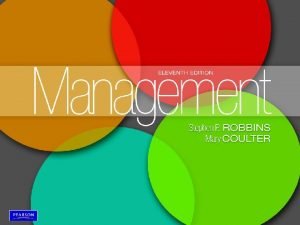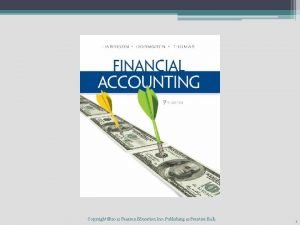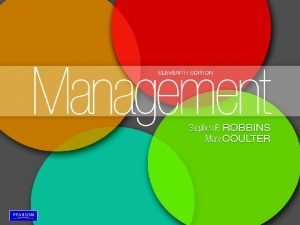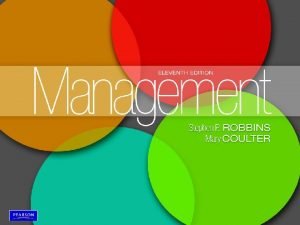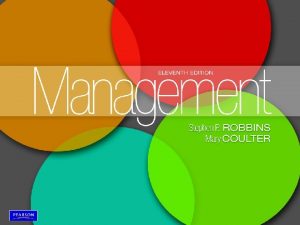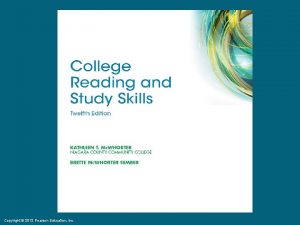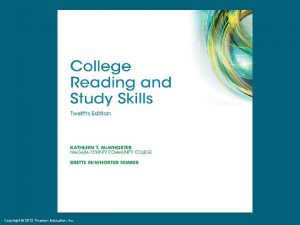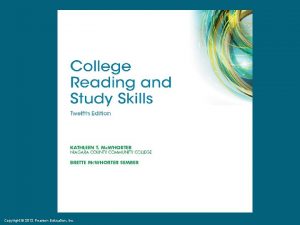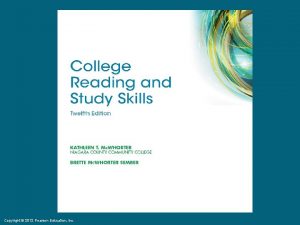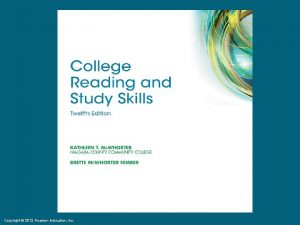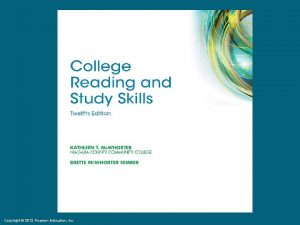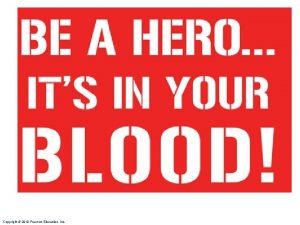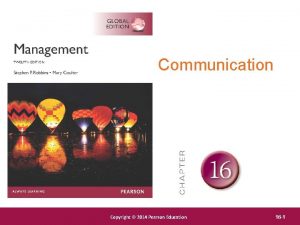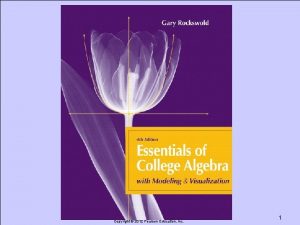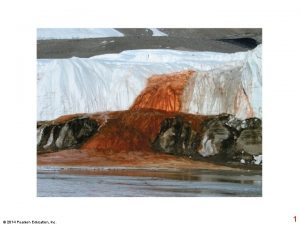Copyright 2012 Pearson Education Inc Copyright 2012 Pearson




























- Slides: 28

Copyright © 2012 Pearson Education, Inc.

Copyright © 2012 Pearson Education, Inc.

Chapter 5 Outline and Learning Goals In this chapter you will learn to Listen critically Ask and answer questions during class Participate in class discussions Work on class activities Make oral presentations Communicate with your professor Copyright © 2012 Pearson Education, Inc.

Listen Critically • Obstacles to critical listening: 1. Closed-mindedness. 2. Selective listening. 3. Judging the speaker instead of the message. 4. Lack of audience awareness. Learning Goals Copyright © 2012 Pearson Education, Inc.

Ask and Answer Questions During Class • Strengthen questioning and answering skills: 1. Conquer the fear of asking questions. 2. Jot down questions for class as you read. 3. State questions clearly and concisely. 4. Ask serious questions. 5. Think responses through. Learning Goals Copyright © 2012 Pearson Education, Inc.

Participate in Class Discussions • Finding Out What Your Instructor Expects • Preparing for Class Discussions • Getting Involved in Class Discussions • Recording and Reviewing Classroom Communication Learning Goals Copyright © 2012 Pearson Education, Inc.

Work on Class Activities • To help your group function efficiently: 1. Choose alert, energetic group members. 2. Participate actively and responsibly. 3. Take a leadership role. 4. Make the most of individual strengths and weaknesses. Learning Goals Copyright © 2012 Pearson Education, Inc.

Make Oral Presentations Learning Goals Copyright © 2012 Pearson Education, Inc.

Communicate with Your Professor • Options for communication: 1. Office hours. 2. Email. 3. Phone. 4. Instant messaging. Learning Goals Copyright © 2012 Pearson Education, Inc.

Let’s Review! Copyright © 2012 Pearson Education, Inc.

Which of the following is part of critical listening? a. b. c. d. Keeping an open mind toward a topic. Paying attention only to ideas you agree with. Focusing on the speaker, not the message. Ignoring the responses of the audience. Copyright © 2012 Pearson Education, Inc.

Which of the following is part of critical listening? a. b. c. d. Keeping an open mind toward a topic. Paying attention only to ideas you agree with. Focusing on the speaker, not the message. Ignoring the responses of the audience. Listen Critically Copyright © 2012 Pearson Education, Inc.

What is the best way to improve your questioning skills? a. Wait until another student asks the question you were thinking of. b. Repeat comments or questions that others have already made. c. Form questions as you read an assignment and bring them to class. d. Practice by posing questions for the sake of asking a question. Copyright © 2012 Pearson Education, Inc.

What is the best way to improve your questioning skills? a. Wait until another student asks the question you were thinking of. b. Repeat comments or questions that others have already made. c. Form questions as you read an assignment and bring them to class. d. Practice by posing questions for the sake of asking a question. Ask and Answer Questions During Class Copyright © 2012 Pearson Education, Inc.

What is the best way to participate constructively in class discussions? a. Engage in direct exchanges with other class members. b. Interrupt the moderator when you have a point to make. c. Make comments privately to a classmate before sharing them with the group. d. Say something brief and to the point early in the discussion. Copyright © 2012 Pearson Education, Inc.

What is the best way to participate constructively in class discussions? a. Engage in direct exchanges with individual class members. b. Interrupt the moderator when you have a point to make. c. Make comments privately to a classmate before sharing them with the group. d. Say something brief and to the point early in the discussion. Participate in Class Discussions Copyright © 2012 Pearson Education, Inc.

When you are participating in group activities, which of the following should you not do? a. b. c. d. Take a leadership role. Participate actively and responsibly. Establish a joking tone to make the group fun. Make the most of individual strengths and weaknesses. Copyright © 2012 Pearson Education, Inc.

When you are participating in group activities, which of the following should you not do? a. b. c. d. Take a leadership role. Participate actively and responsibly. Establish a joking tone to make the group fun. Make the most of individual strengths and weaknesses. Work on Class Activities Copyright © 2012 Pearson Education, Inc.

What should be your first step in practicing an oral presentation? a. Record yourself speaking. b. Practice aloud by yourself several times. c. Present your speech to friends and ask for criticism. d. Write out your speech several times to memorize it. Copyright © 2012 Pearson Education, Inc.

What should be your first step in practicing an oral presentation? a. Record yourself speaking. b. Practice aloud by yourself several times. c. Present your speech to friends and ask for criticism. d. Write out your speech several times to memorize it. Make Oral Presentations Copyright © 2012 Pearson Education, Inc.

Which of the following statements about communicating with professors is not true? a. Office hours are an opportunity to get to know your professors. b. Emails to professors should use correct grammar, spelling, and punctuation. c. The best way to send time-sensitive information to your professors is by email. d. Most professors do not use instant messaging to communicate with students. Copyright © 2012 Pearson Education, Inc.

Which of the following statements about communicating with professors is not true? a. Office hours are an opportunity to get to know your professors. b. Emails to professors should use correct grammar, spelling, and punctuation. c. The best way to send time-sensitive information to your professors is by email. d. Most professors do not use instant messaging to communicate with students. Communicate with Your Professor Copyright © 2012 Pearson Education, Inc.

What is the best strategy if you “go blank” during an oral presentation? a. b. c. d. Start your presentation over. Ask if there any questions. Repeat what you just said. End your presentation. Copyright © 2012 Pearson Education, Inc.

What is the best strategy if you “go blank” during an oral presentation? a. b. c. d. Start your presentation over. Ask if there any questions. Repeat what you just said. End your presentation. Make Oral Presentations Copyright © 2012 Pearson Education, Inc.

When recording and reviewing classroom communication, what should you not do? a. Review your notes and fill in details as soon as possible after the discussion. b. Note the speaker’s name in the margin of your notes next to his or her comments. c. Focus on recording as many details as possible during the discussion. d. Briefly summarize online discussions, as often as necessary based on the number of posts. Copyright © 2012 Pearson Education, Inc.

When recording and reviewing classroom communication, what should you not do? a. Review your notes and fill in details as soon as possible after the discussion. b. Note the speaker’s name in the margin of your notes next to his or her comments. c. Focus on recording as many details as possible during the discussion. d. Briefly summarize online discussions, as often as necessary based on the number of posts. Participate in Class Discussions Copyright © 2012 Pearson Education, Inc.

What is the first step in avoiding selective listening? a. b. c. d. Recognizing your own biases. Writing a response to the speaker’s viewpoints. Ignoring ideas that conflict with your viewpoint. Forming a convincing argument for when the speaker has finished. Copyright © 2012 Pearson Education, Inc.

What is the first step in avoiding selective listening? a. b. c. d. Recognizing your own biases. Writing a response to the speaker’s viewpoints. Ignoring ideas that conflict with your viewpoint. Forming a convincing argument for when the speaker has finished. Listen Critically Copyright © 2012 Pearson Education, Inc.
 Pearson education 2012
Pearson education 2012 2012 pearson education inc
2012 pearson education inc Pearson education inc. 2012
Pearson education inc. 2012 2012 pearson education inc
2012 pearson education inc Anterior posterior ventral dorsal
Anterior posterior ventral dorsal 2012 pearson education inc
2012 pearson education inc Pearson education inc. 2012
Pearson education inc. 2012 2012 pearson education inc anatomy and physiology
2012 pearson education inc anatomy and physiology 2012 pearson education inc
2012 pearson education inc 2012 pearson education inc
2012 pearson education inc Pearson education inc. 2012
Pearson education inc. 2012 2012 pearson education inc
2012 pearson education inc Pearson education inc. 2012
Pearson education inc. 2012 2012 pearson education inc
2012 pearson education inc 2012 pearson education inc
2012 pearson education inc 2012 pearson education inc
2012 pearson education inc Pearson education inc. 2012
Pearson education inc. 2012 2012 pearson education inc
2012 pearson education inc Pearson education limited 2017
Pearson education limited 2017 2017 pearson education inc
2017 pearson education inc 2010 pearson education inc
2010 pearson education inc 2009 pearson education inc
2009 pearson education inc 2018 pearson education inc
2018 pearson education inc 2014 pearson education inc
2014 pearson education inc Copyright 2010 pearson education inc
Copyright 2010 pearson education inc Copyright 2010 pearson education inc
Copyright 2010 pearson education inc Copyright by pearson education inc. answers
Copyright by pearson education inc. answers 2008 pearson education inc
2008 pearson education inc Copyright 2009 pearson education inc
Copyright 2009 pearson education inc



